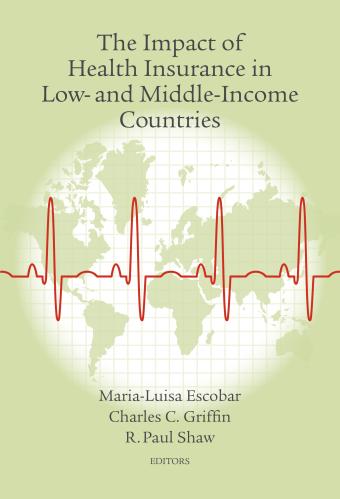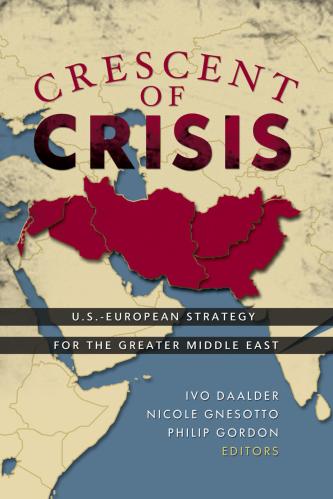As summer begins, we look back on Brookings experts’ research and commentary from the month of May to find 10 interesting things we learned.
1. Sixty-two percent of Americans support NATO

Bill Galston reviews new polling data from the Pew Research Center that shows that support for NATO “has rebounded on both sides of the Atlantic.” While support across all Americans stands at 62 percent, this divides into 81 percent of liberals and 48 percent of conservatives.
2. Hassan Rouhani won re-election as president of Iran with 57 percent of the vote
 Suzanne Maloney says Rouhani’s re-election win is a “resounding mandate” and “matters most for the anticipated disasters that it averted.” But it may not result in jobs, increased freedoms, or decreased pressure from Washington. “Iran’s election is not a quick fix to the problems facing Iranians or to those its government foments,” she writes, “but it is an essential step along the road to more responsible governance.”
Suzanne Maloney says Rouhani’s re-election win is a “resounding mandate” and “matters most for the anticipated disasters that it averted.” But it may not result in jobs, increased freedoms, or decreased pressure from Washington. “Iran’s election is not a quick fix to the problems facing Iranians or to those its government foments,” she writes, “but it is an essential step along the road to more responsible governance.”
3. There are about 3.2 billion people in the global middle class

In a recent podcast, Homi Kharas describes new research on the rise of the global middle class, and explores the challenges and opportunities this brings in emerging and developing economies. He says that “in three or four years we’ll probably see the middle class becoming a majority of the world’s population for the first time ever. And that to me is a fairly significant tipping point.”
4. Minority and black turnout was lower in the 2016 presidential election than in the two previous

Bill Frey examines newly released U.S. Census Bureau data that confirm that minority and black voter turnout was down in 2016 relative to 2008 and 2012 when Barack Obama was on the ballot. He notes that the 2016 turnout for black Americans “showed the sharpest decline” among all minority groups compared to 2012: 7.1 percent, the lowest black turnout rate since 2000. “Nonetheless,” Frey concludes, “Obama’s experience coupled with demographic projections make plain that racial minorities can be consequential voting blocs in the future, especially if their members can be energized nationally and in key swing states.”
5. America’s low unemployment rate masks workers who have dropped out of the labor market

The labor force participation rates of prime-age (25-54) men are declining and stagnating for women. Eleanor Krause and Isabel Sawhill examine the causes of these trends—including skills gaps, automation, and outsourcing—and what can be done about them. “There is still a lot that we don’t know about America’s declining labor force participation rate,” the authors write, “and it is only one symptom of what may be a fundamental transformation in the economy that requires new and updated policies as a response.”
6. China plans to invest $124 billion in its “One Belt, One Road” regional trade initiative

Josh Meltzer says that U.S. recognition of the importance of China’s “One Belt, One Road” initiative, part of the May 11 U.S.-China Trade Agreement, “seems to be the result of a lack of a coherent economic strategy for Asia and the administration’s economic nationalist agenda.” This follows in the wake of the Trump administration’s decision to withdraw the U.S. from the Trans-Pacific Partnership trade agreement.
7. Ninety-five percent of U.S. businesses are “pass-throughs” wherein income is passed through and taxed at the owner’s individual rate

The Trump administration’s and House GOP’s tax reform plan proposes reductions in business taxes. The White House has proposed reducing both the corporate and pass-through rates to 15 percent from 35 percent and 39.6 percent, respectively. Aaron Krupkin and Adam Looney present 9 facts about pass-through enterprises and other U.S. businesses, including the fact that pass-through businesses earn a majority of business income.
8. A majority of Americans still support accepting refugees from the Middle East, but a majority of Republicans do not

Shibley Telhami’s latest survey research on American public attitudes about issues related to the Middle East includes the finding that 59 percent of those surveyed (in April 2017) support taking in refugees from conflicts in Syria and other Middle Eastern countries—after screening them for security risks. This figure is unchanged since May 2016. However, only 36 percent of Republicans support the idea, while 51 percent of independents and 83 percent of Democrats do.
9. The number of U.S. patents in cleantech innovation categories has doubled since 2001
 Devashree Saha and Mark Muro examine the cleantech sector, finding that while the total number of patents grew to about 32,000 last year, “serious concerns remain about the competitiveness of the U.S. cleantech innovation scene.” They say Congress should “set aside” President Trump’s budget proposal that cuts R&D appropriations and instead “coalesce around a core list of minimum viable supports for low-carbon innovation and growth.”
Devashree Saha and Mark Muro examine the cleantech sector, finding that while the total number of patents grew to about 32,000 last year, “serious concerns remain about the competitiveness of the U.S. cleantech innovation scene.” They say Congress should “set aside” President Trump’s budget proposal that cuts R&D appropriations and instead “coalesce around a core list of minimum viable supports for low-carbon innovation and growth.”
10. Three key congressional support agencies have lost 45 percent of their combined workforce in the last four decades

Curtlyn Kramer presents data from “Vital Statistics on Congress” that show the loss in professional staff at the Congressional Research Service, the Government Accountability Office, and the Congressional Budget Office. But congressional office staffs have also diminished or stagnated during this period. Thus, Kramer writes, Congress’s members and staff “must stretch their resources.”
The Brookings Institution is committed to quality, independence, and impact.
We are supported by a diverse array of funders. In line with our values and policies, each Brookings publication represents the sole views of its author(s).





Commentary
10 things we learned at Brookings in May
June 1, 2017